
To the place where "good design" was created
Good design, excellent design, design that opens up the future, ideas that move people's hearts, and actions that lead society always have small beginnings.
Interviews with designers at the birthplaces of good design to find hints for the next design.

Destination
Tsuboe Co., Ltd. (Tsubame City, Niigata)
To foresee the next steps, branding is crucial (Part 1)
2023.04.27
In “GOOD DESIGN TANBOU(=exploring),” we take a look at the first small steps of good design through on-site interviews. Our first destination is Tsuboe Co., Ltd. in Tsubame City, Niigata, which won the GOOD DESIGN AWARD for two consecutive years for their graters. They revealed the history of the creation of their unique graters, and how design came to be integrated with everyday items.
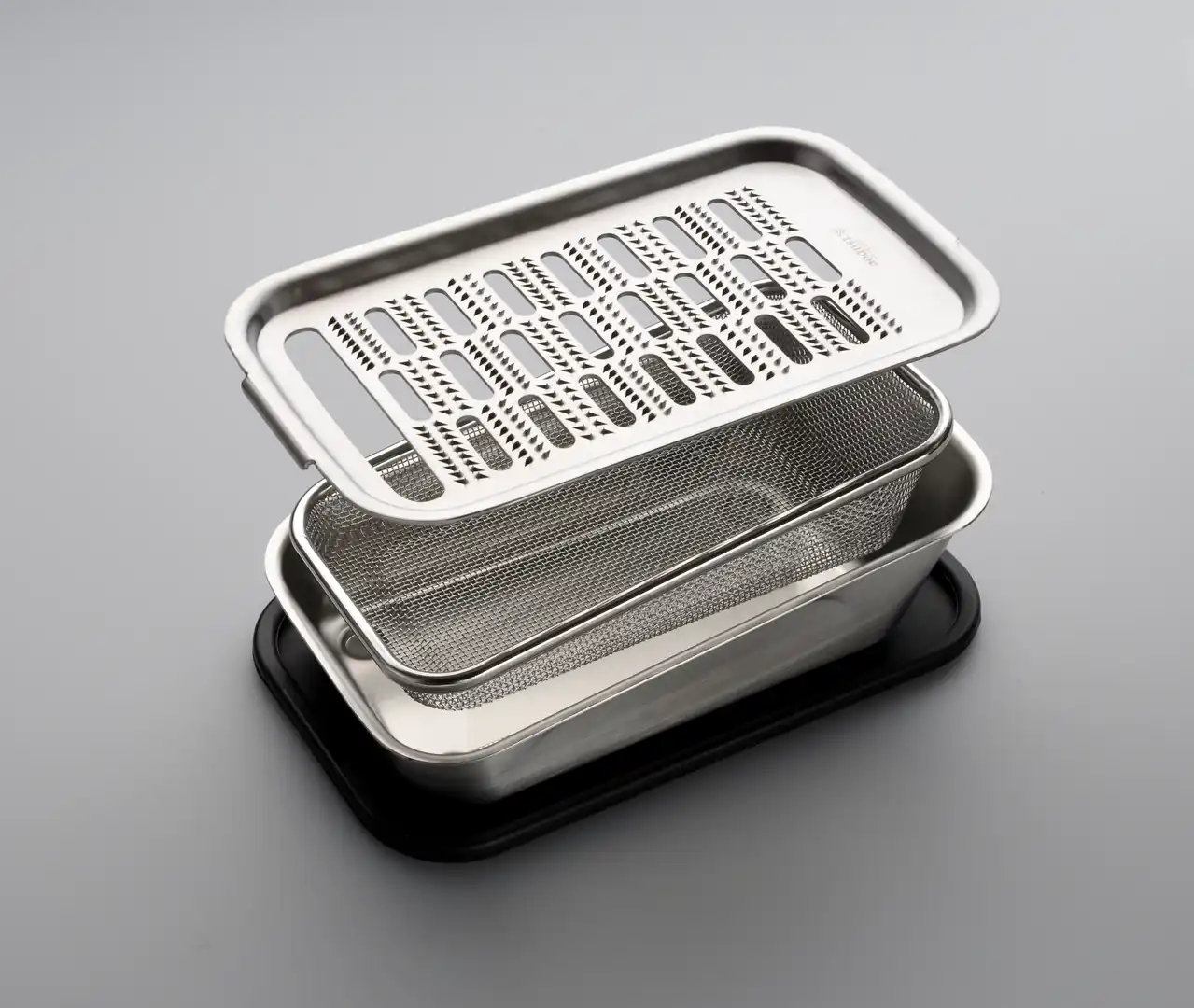
From manual labor to mechanization
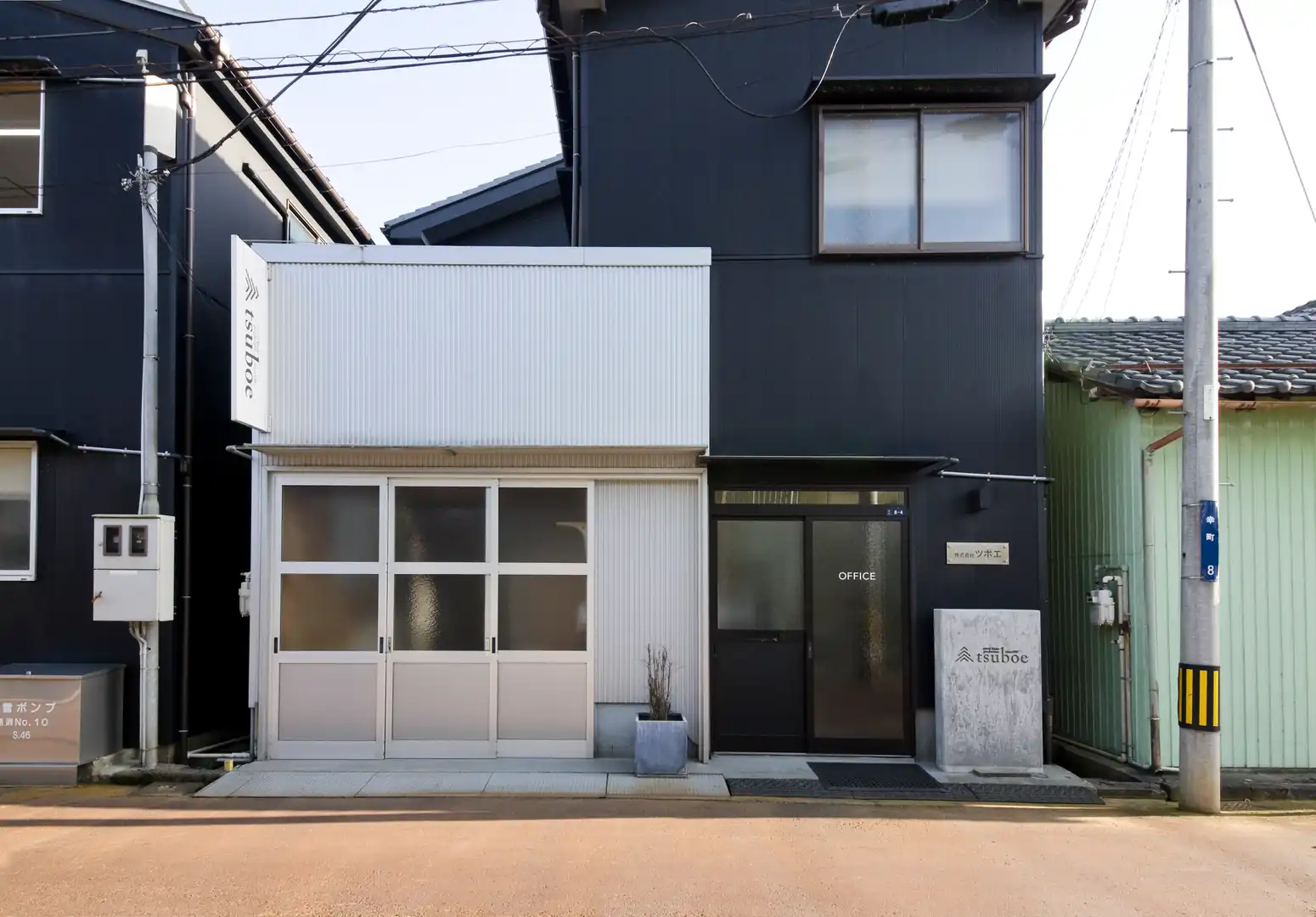
- Tsuboe received the GOOD DESIGN BEST 100 for “the finest grater box of Tsuboe – hako” in 2020, and the GOOD DESIGN AWARD in 2021 for “round plate – maruzara” and “square plate – kakuzara” from the same series. Today, we are going to explore the path to these awards.

Shinji Kasahara (president and CEO of Tsuboe) Our company has a long history, although it is still a small business with fewer than 20 employees. It started in 1907, when my great-great-grandfather, Kotaro Kasahara, began manufacturing files in Tsubame City, a city with a thriving metalworking industry. I’m the fourth generation.
A file is used to sharpen a saw and is made with a bladed tool called a chisel. There used to be great demand, but as saws became mechanized, disposable replacement blades became popular and files gradually disappeared. I started to make graters around this time.
- Your business shifted from making files to making graters.
Kasahara A grater is also used to grind vegetables, so making them shares a common technique. For both of them, “hon-metate,” a process to dig out each single blade with a chisel, is important. My father Eiji, the third generation, explored how to mechanize the production of graters in a process similar to that of manual work, while scaling it down.
- Does it take long to make a grater just by hand?
Kasahara Probably we would be able to produce 10 graters a day at best if we use the hon-metate process. My father started making various graters by machine so that more people could use them. We even started from making a prototype of the machine.
I joined the company 30 years ago, then made a full shift from files to graters. We continued to mechanize our manual production by using new materials such as aluminum and titanium, which are solid and difficult to process.
- You have even mechanized the hon-metate process with the NC machine that was developed in-house.
Kasahara The mechanization has enabled us to make a wide variety of graters. In recent years, we have been receiving orders mainly for OEM (original equipment manufacturing) production. We even manufacture a specially designed large grater that catches grated radish in a bucket.
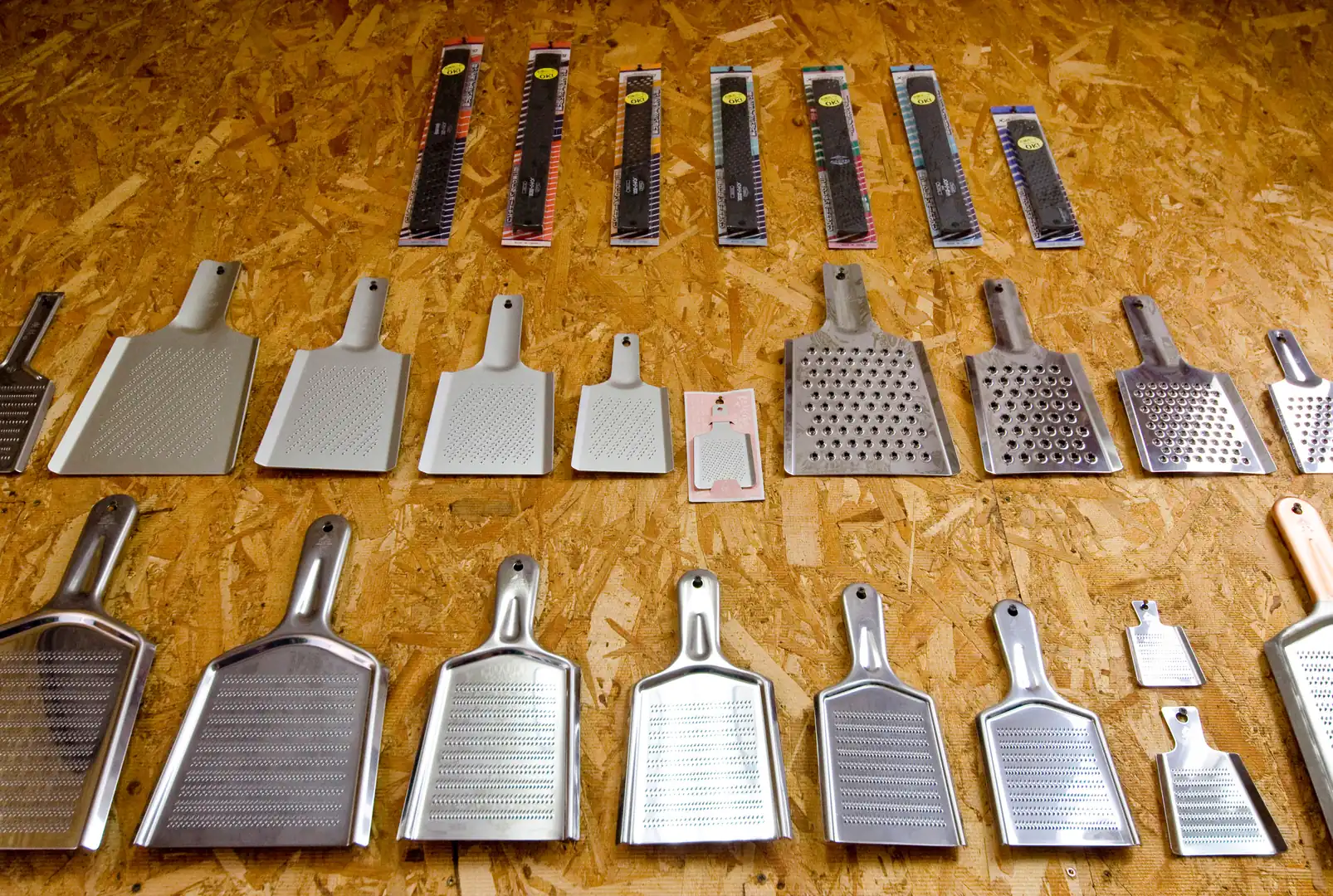
Everything was half-baked and there was no room for new challenges
- You were receiving OEM orders. Doesn’t that mean your business was running steadily?
Kasahara It looked steady based on the numbers because our business stood on order-based wage works and there was no need for investment in the development of machinery. On the other hand, we had competitors all over the world, and therefore we always had this fear that our deals might be suddenly terminate one day.
I feared that we would eventually lose our footing if we continued like this. Then I decided that the only way to get rid of such anxiety was to try to make something unique to Tsuboe. In Tsubame, there has been a case of becoming a global company by branding. I thought of using this case as a reference.
That said, we didn’t have an in-house design department, and the president had to do everything by myself. So I used software to design company’s own logo.
But when I showed it to my employees, the only thing they said was “It looks good” (laughs). I guess that would be all they could say. As a result, everything was half-baked and there was no room for new challenges.
- That is a common issue in many companies.
Kasahara Back then, an acquaintance of mine introduced me to Ms. Kaoru Kuriyama, a graphic designer and art director. So I asked her to design a logo. She interviewed me about the company’s history, policy, and many other things.
Then I realized that she was trying to get to know our spirit so that she could design a logo. It is not just about fancy looks. I was impressed and realized that was how professionals do their jobs.
When I saw the finished logo, I was absolutely astonished. The reason is that grater blades were incorporated into the design to express our history and spirit.
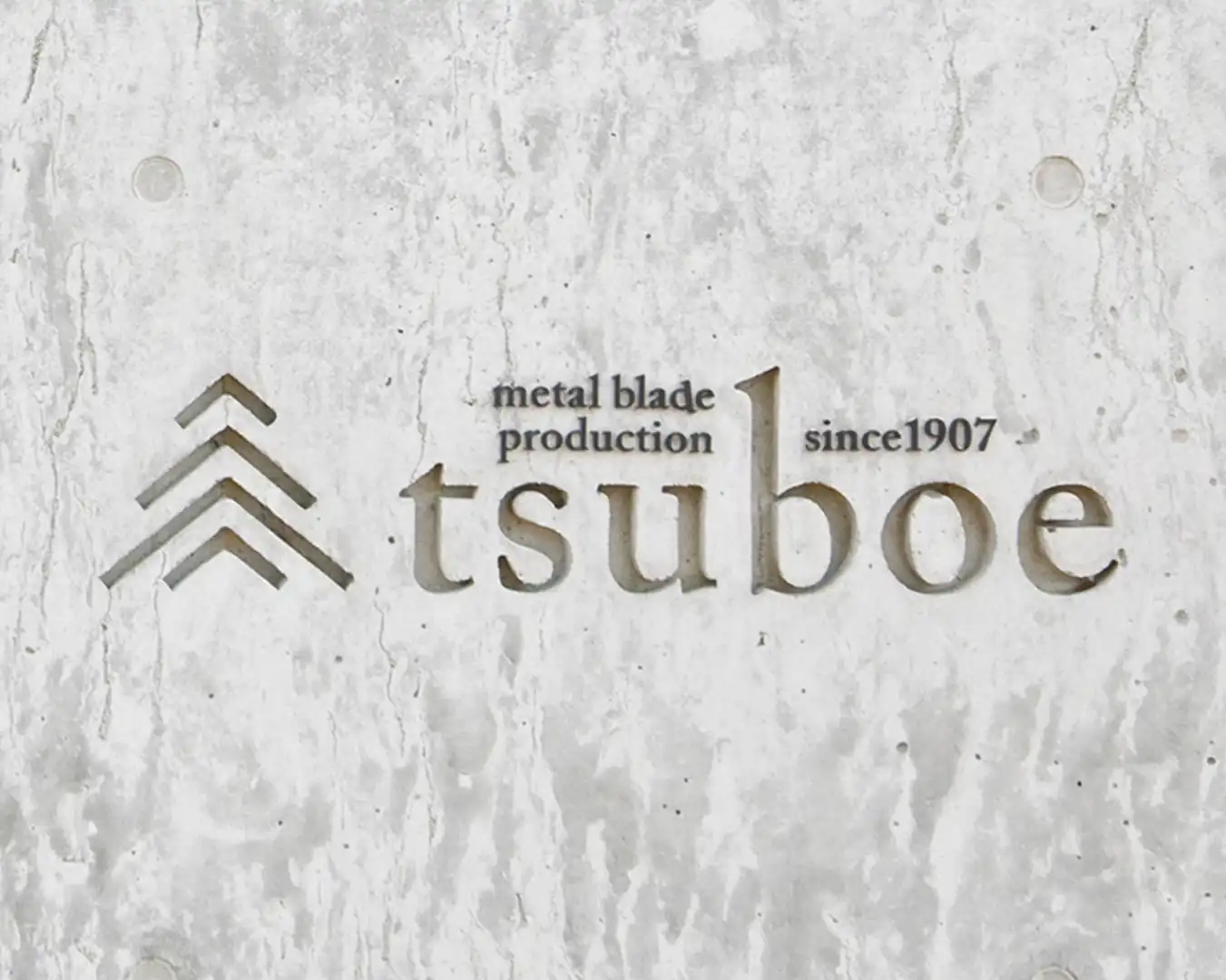
Why a straight design was created
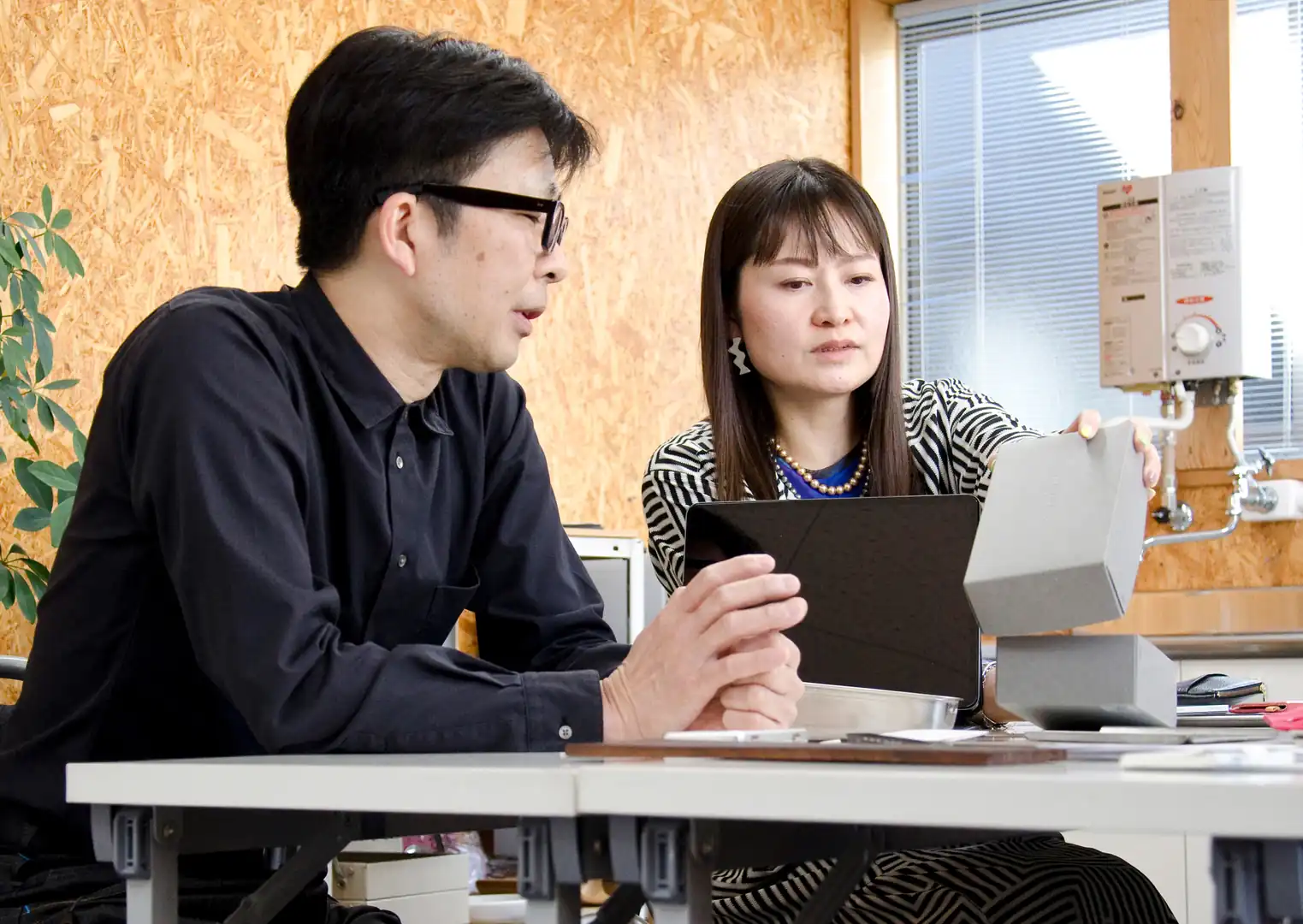
Kaoru Kuriyama(kuriyama kaoru design) It started about six years ago. It started with a one-off job.
Kasahara For decades since my father’s time, I have been making a lot of graters on request. The reason there are so many types of graters must be that the ultimate one hasn’t been made yet. I always wondered what the ultimate grater would be like.
I had been planning and experimenting for a long time. But I could never figure it out by myself. So I consulted with Ms. Kuriyama, “I know you are not a product designer, but I want you to help me as much as you can.” From there, the project started moving at a rapid pace.
- For graphic designers, product design is usually outside their field.
Kuriyama “Hako” was appraised by the GOOD DESIGN AWARD judges as having “no trace of forced manipulation of the design to differentiate it.” I drew illustrations based on Mr. Kasahara’s thoughts, and then we outsourced drawing a plan. Therefore, we had no intention of making it complicated in order to differentiate it or to add unprecedented decoration.
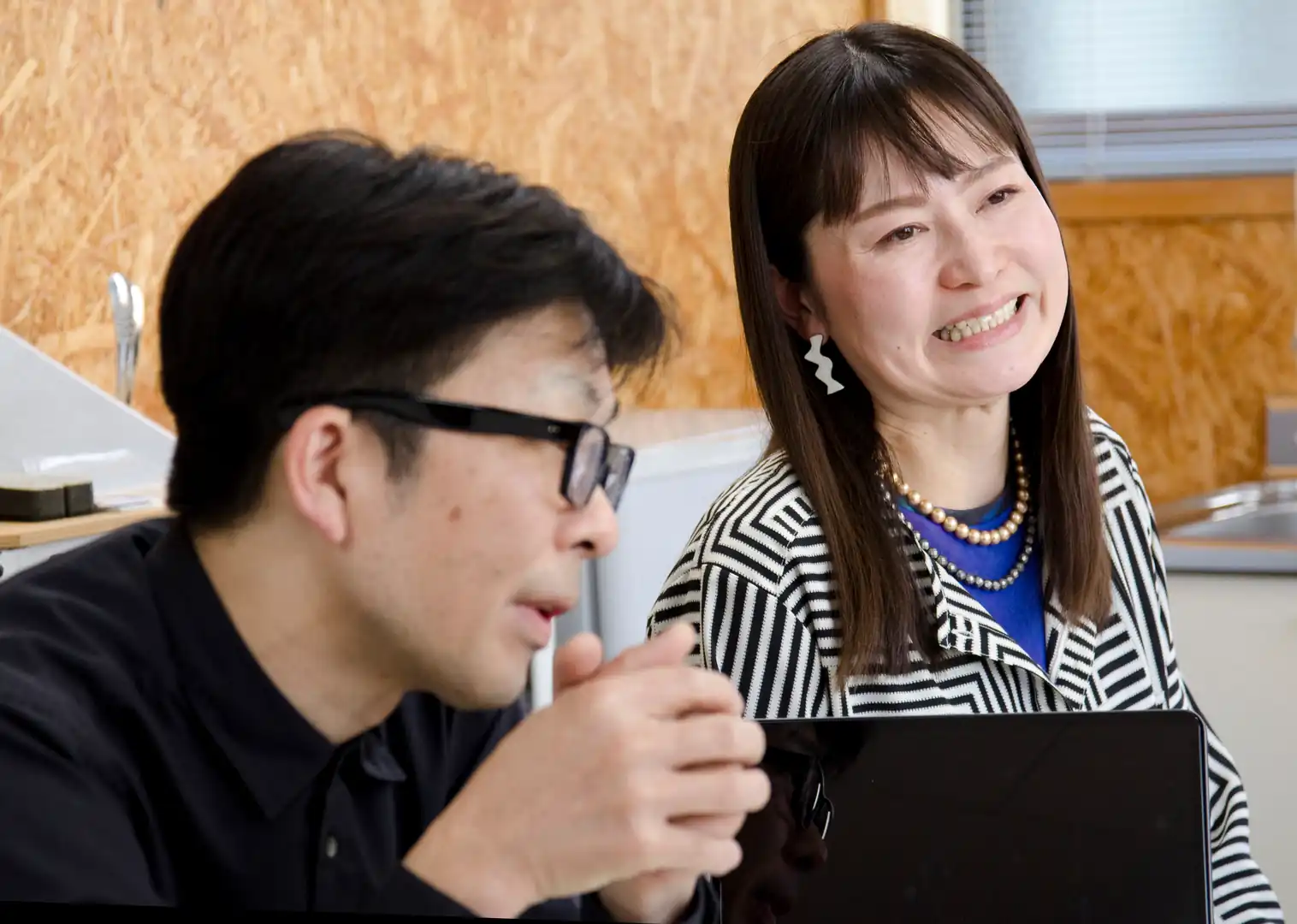
- There was another comment from the judges, saying, “sincere and straightforward.” The power of graphic design was shown in the drawing that reflected Mr. Kasahara’s thoughts directly.
Kasahara I had a lot of ideas. For example, as I have manufactured a lot of professional-use graters, I knew that professional chefs appreciated the taste of grated daikon radish when made with a grater produced by the “hon-metate” technique. A hon-metate grater slashes down daikon radish and makes it fluffy.
But shaping this wasn’t easy. We made prototypes and improved them, and asked for drawings over and over again.
Kuriyama Mr. Kasahara was full of ideas, saying, “I want to do this, I want to do that,” and I could sense his enthusiasm from his words. Considering the company’s future, we should establish it as a brand. So we discussed it together and formed it as a brand.
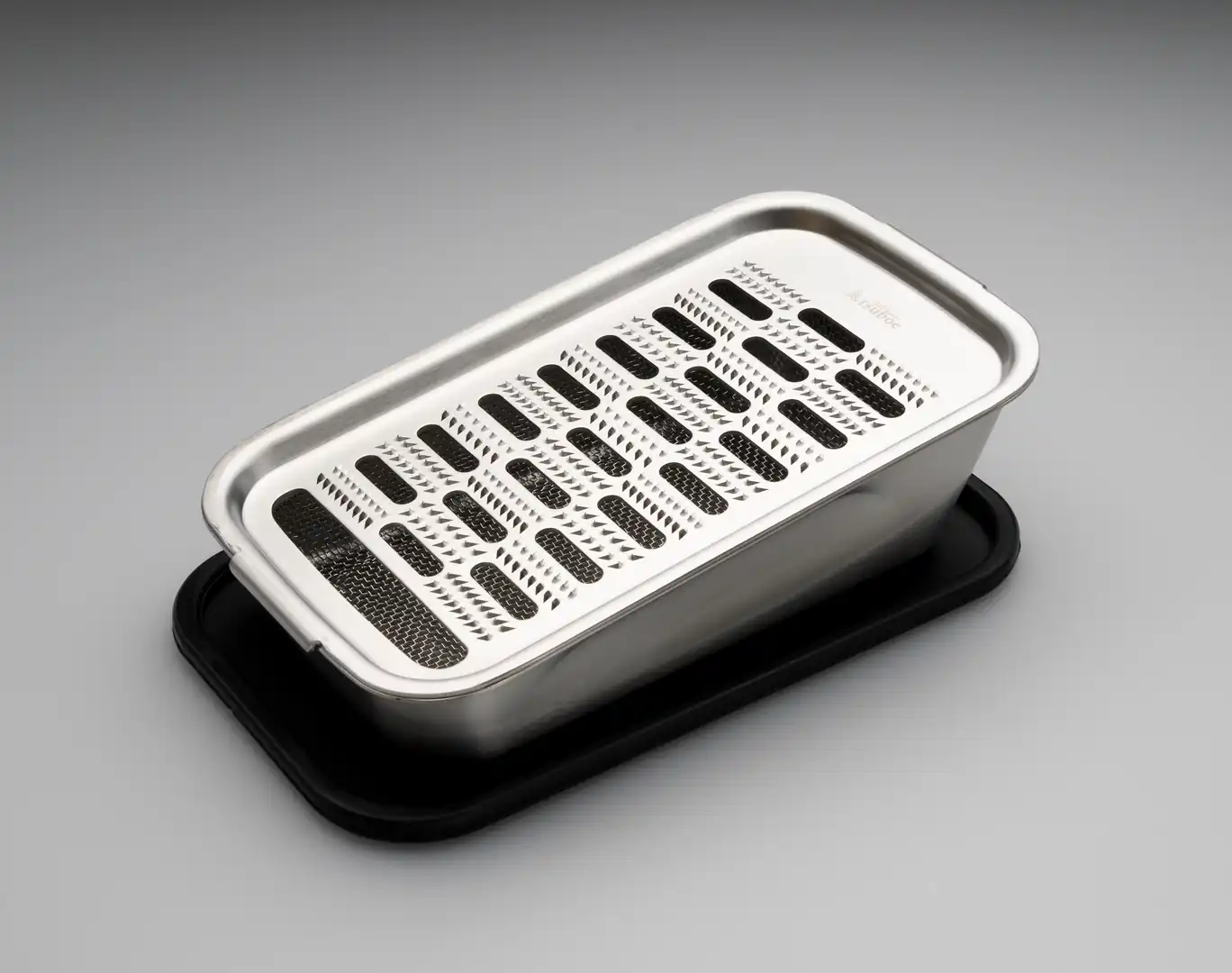
Design points It looks simple but is designed with an eye for detail, such as a slanting shape for comfortable grating, and removing curves at the edges of the container to keep away vegetable waste. It comes with a colander and a silicone lid, which helps prevent slipping when grating a radish. The silicone lids, colanders, and containers are produced by manufacturers in Tsubame City and Sanjo City. It is really a technological marvel, and the product is finished in a way that even experts will be amazed.
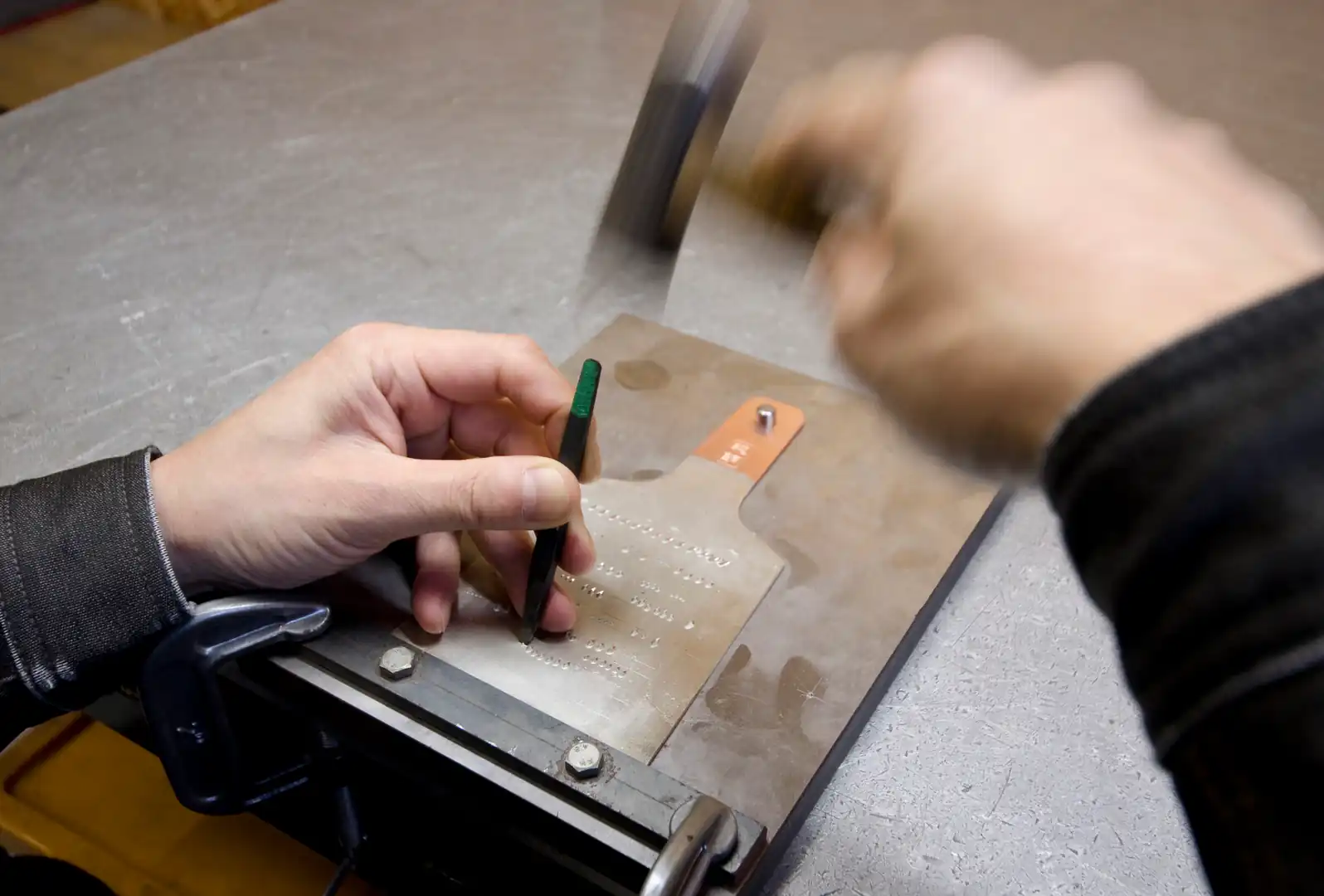
I should not flatter my own product as the “finest”
Kuriyama Product names and brand names are important. When we were thinking about the brand name, I suggested using the word “gokujo” (the finest) in the name. But Mr. Kasahara said, “No, no...”
Kasahara From the standpoint of a manufacturer, I can’t myself say it’s the “finest.” Of course, in my heart, I want to create the very finest-quality products. But am I in the position to say that myself? (laughs) No way.
Kuriyama The name Tsuboe was born more than 100 years ago, and it was named after a lead-filled jar (tsubo) used to quench steel. The history from file to grater, the pride we inherited, and the skills we developed are all the finest.
To live up to the name, let’s say “the finest of Tsuboe.” I said to him, once people use the grater, they would know it is the finest. But this is a viewpoint that only someone who can objectively observe from outside the company can have.
- A third party’s evaluation became the core of the brand design.
Kasahara I would never come up with this name by myself. It’s a name you can’t give without great confidence. But I thought about it every day, and after a week or so, I got used to it, and now I’m ready to bear the name, or I should say I became used to it.
Kuriyama When I see users’ comments on SNS saying, “It deserves to be called the finest,” I am really glad I chose this name.
In this way, the “finest” masterpiece grater is completed. But they are only halfway there. In Part 2, they will tell us about their dilemma that “It won’t be in much demand if it is expensive,” why they applied for the GOOD DESIGN AWARD, and how it became a hit.
In GOOD DESIGN TANBOU(=exploring), we will deliver interviews and introduce works based on a certain subject. This time, the theme is “small business paradox.” Small businesses* tend to be at a disadvantage when it comes to market competition, but they may also have advantages such as being able to think freely and make decisions faster. We delve into such a paradox and the good design that is unique to small businesses. *Companies with capital of 300 million yen or less and 300 or fewer employees"
The finest grater box of Tsuboe
Tsuboe Co., Ltd.
Established in 1907 in Tsubame City, Niigata. Shinji Kasahara was appointed as the fourth president in 2010. He took on the challenge of making graters with hard-to-process materials such as stainless steel, hard aluminum alloy, and titanium, and started to design and manufacture grating blades for special machines. When the brand’s logo was renewed in 2017, the company took the opportunity to rebrand and developed an unprecedented premium grater. https://tsuboe.co.jp
- Award details
- 2021 “Tsuboe’s finest grater round plate – maruzara” for wasabi, “Tsuboe’s finest grater square plate – kakuzara” for ginger https://www.g-mark.org/en/gallery/winners/9e49893c-803d-11ed-af7e-0242ac130002?years=2021 2020 GOOD DESIGN BEST 100 “The finest grater box of Tsuboe – hako” https://www.g-mark.org/en/gallery/winners/9e25882b-803d-11ed-af7e-0242ac130002
- Producer
- Shinji Kasahara
- Director
- Kaoru Kuriyama
- Designer
- Shinji Kasahara
Tomoko Ishiguro
Editor/writer
After working in the editorial department of “AXIS,” she became a freelancer. She writes, edits, and plans, with a focus on design and life culture. Her major editorial works include LIXIL BOOKLET series (book, LIXIL Publishing) and “Oishisa no Kagaku” (magazine, NTS Publishing).
Yasuo Saji
Photographer
Graduated from Department of Photography, Kuwasawa Design School in 1970. He gained experience as a freelancer by engaging in photo shooting for “Graphic Design” edited by Masaru Katsumi and other works. Presently, he mainly works on printed media including design magazines, PR magazines, art college archives, and art museum pictorial books.


